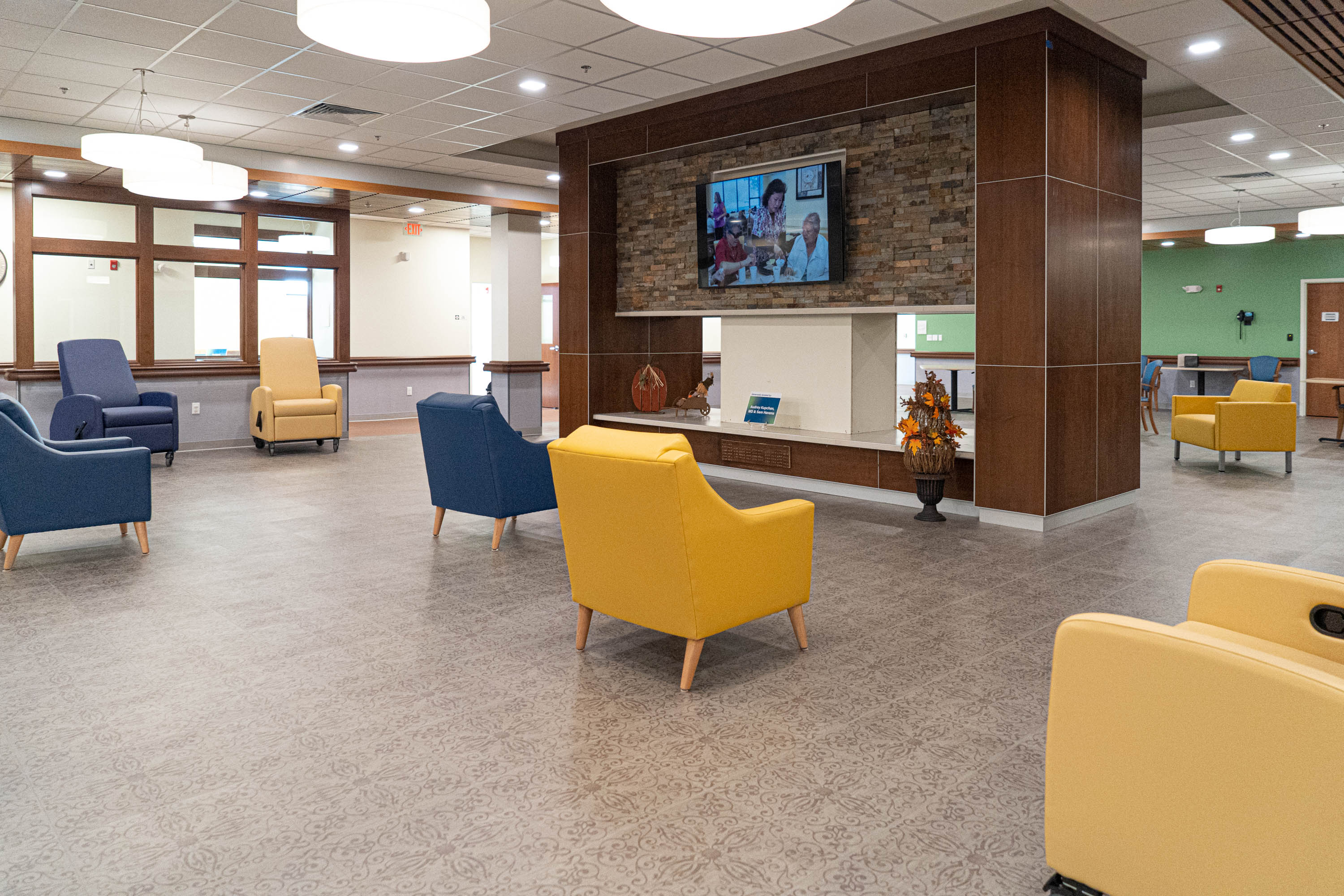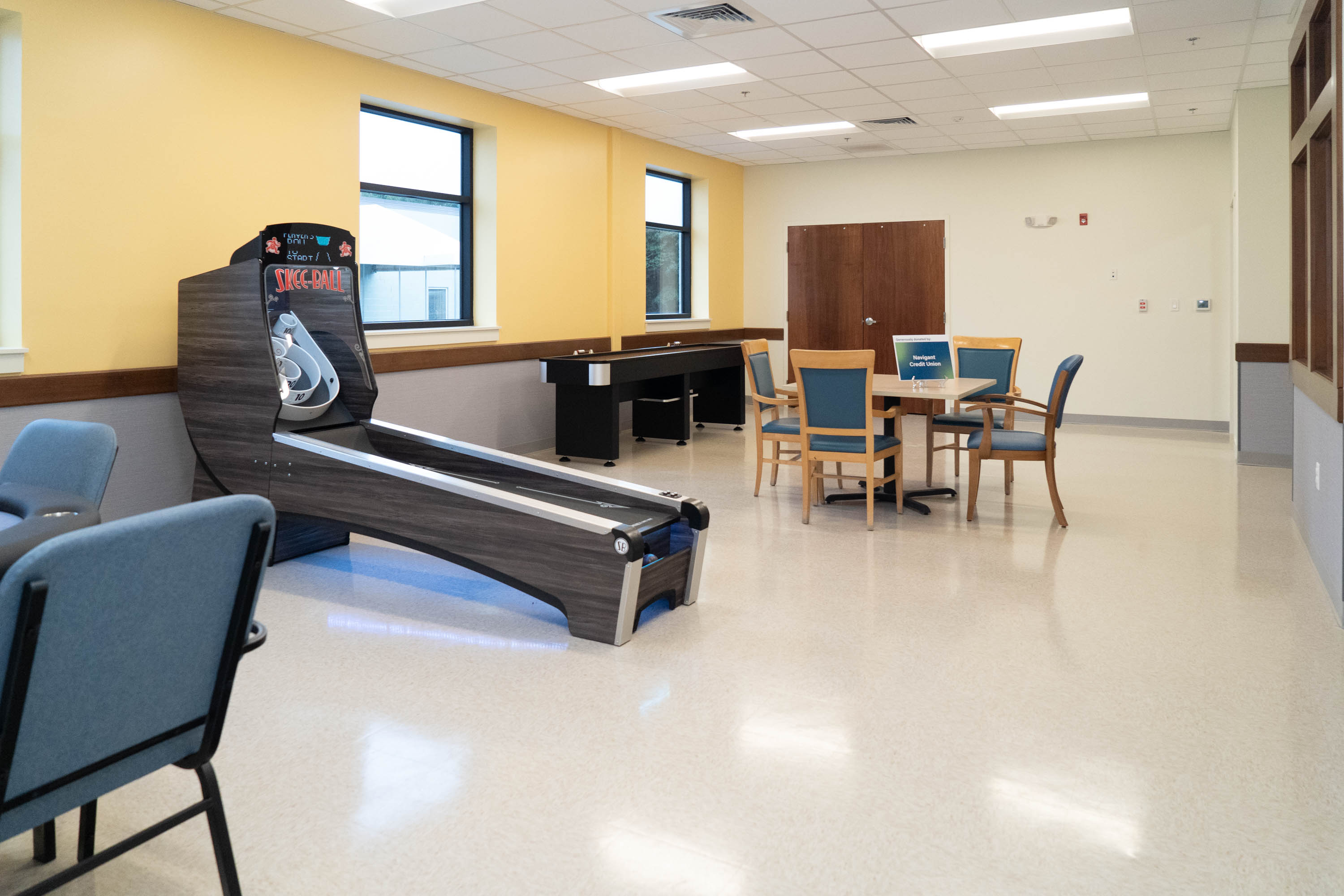PACE Programs Innovate to Optimize Their Centers

PACE-RI opened a new center in September 2021 featuring a more open layout with ample natural light.
During the COVID-19 pandemic stay-at-home orders of 2020, NPA held a series of webinars to share innovative responses to the public health emergency by PACE programs and to explore what the future of PACE could look like as a result. When the public health emergency ended earlier this year, NPA followed up with innovators to learn what changes they envision will remain or emerge in a post-pandemic PACE environment.
During the public health emergency, PACE Organization of Rhode Island (PACE-RI) built a new center to replace its Providence site. The 59,000-square foot center was more than twice the size of the previous facility when it opened in September 2021.
Having experienced the pandemic for a year-and-a-half before the new center opened, PACE-RI was able to incorporate pandemic-related considerations into its construction. For example, the organization made sure to create an entrance that participants could use to access the clinic without crossing through the day center, reducing the potential for spreading infectious illnesses.
During the pandemic, people came to appreciate spending more time outdoors. The new PACE-RI center features an outdoor patio that is popular with participants and staff. As a result, the organization plans to add an outdoor space to another center as well, noted Ryan Girard, chief of Operations.
Based on input from participants, the new center has a more open layout with lots of natural light, quiet spaces, an arts and crafts room, and a game room.
Thanks to the innovations, center attendance is recovering, although slower than expected, Girard said. “We have the capacity, so we have to work during enrollment to figure out what people want from their care and the day center.”

PACE-RI included a game room for the center they opened in September 2021.
It’s important to consider the care goals of participants when designing and using a PACE center, agreed Robert Schreiber, MD, vice president and national medical director of Care Model Strategy for myPlace Health. “The participant is the captain of the ship, and the interdisciplinary team helps navigate it.”
Dr. Schreiber brought the lessons he learned from working for Summit Eldercare with him as he began working with myPlace Health, a prospective PACE organization. He believes the PACE center of the future will have “a different connection to the community and will be dramatically different in structure, as well as function.” One difference will be connecting PACE with supportive housing. “We could have apartments for respite care, 24/7 ADL [activities of daily living] care, nursing care for people who need antibiotics, or 24/7 end-of-life care,” he said. “People wouldn’t need to go to the hospital as often.”
He also is interested in connecting with educational institutions in the Los Angeles area to explore how they could collaborate with PACE programs. “I’m excited to go to universities and communicate the opportunity that exists with bringing care to people,” he said. “We could study the impact of building PACE near a university with programs that correspond to the different disciplines within PACE.”
Technology will drive some of the changes in the relationship between PACE centers and participants. For example, incorporating technology into housing units could support care provision and monitor participant health, said Dr. Schreiber.
In addition, some of the social connections that participants experience at a center can be supported and sustained outside of it through technology like GrandPads, tablets designed specifically for seniors. “A group has started to meet regularly through GrandPad called the PACE Zoomers,” Girard said. “That peer-to-peer connection is really vital.”
When planning how to incorporate technology, PACE programs need to keep in mind how it will provide value with a measurable impact, as well as measuring the right things, Dr. Schreiber said. “At myPlace Health we will use a telehealth platform that looks at outcomes. We want to see the before and after to see if there is a significant difference and in what areas. I suspect that using technology will have a strong impact on the social component of care, which is vital. It improves quality of life.”
Key considerations are how familiar PACE participants are with technology and whether they can afford to purchase it for themselves. PACE-RI screens new enrollees for technology access to know how it can be incorporated into their care. The case could be made for providing all PACE participants with access to appropriate technology resources as long as they can be integrated into the model, Dr. Schreiber said.
While facility-based care will remain a foundational component of PACE operations, the embrace of technology is part of recognizing that home-based care is increasingly becoming a focus of PACE programs in response to participant preferences.
“At the onset of the pandemic, we transitioned overnight to a home-based model,” Dr. Schreiber said. “But there are still benefits to a hybrid model. The pendulum swings back and forth, but home-based care will be critical going forward.”
For its part, PACE-RI is addressing both swings of the pendulum, expanding its home care staff by providing certified nursing assistant (CNA) classes and growing its transportation roster to handle an increased number of medical appointments.
PACE-RI also is working to identify, hire, and train people to become “PACE homemakers.”
“We complete the state-regulated training modules and are able to offer clinical hour requirements at the center,” said Girard. “Being that they are PACE homemakers, we add many PACE elements, including IDT integration and care plan education. We provide training on our home care software, which the homemakers utilize to ensure tasks are completed and schedules are confirmed.”
PACE-RI also offers cooking classes through its Food Services Department, focusing on healthy meals that can be completed during a homemaker’s scheduled visit.
There is inherent value in learning more about participants’ environments when entering their homes, said Dr. Schreiber, who noted that managed care organizations that provide most of the patient care in a facility are increasingly leveraging home health.
“There is value to the entire interdisciplinary team seeing a participant’s home” he said. “It tells you something more about their needs and who they are.”
